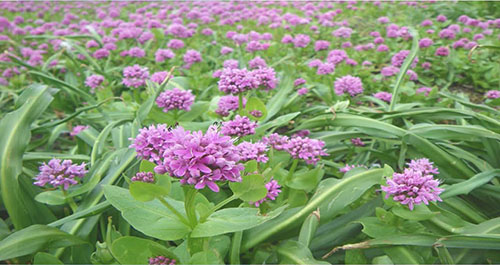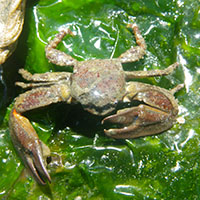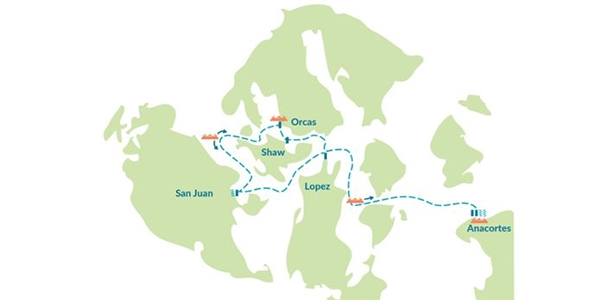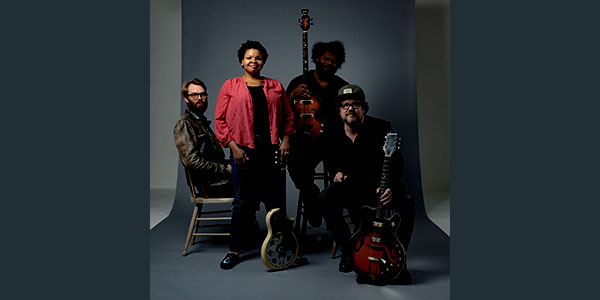Thursday, November 16, 5:30 p.m., Emmanuel Episcopal Parish Hall
— from Russel Barsh for Kwiaht —
 Kwiaht and community scientists of the Indian Island Marine Health Observatory invite the public to the eighth annual celebration of Indian Island and Fishing Bay, Eastsound’s window on the sea, at the Episcopal Parish Hall, November 16, starting at 5:30 p.m. Music, displays, and a slideshow presentation of this past year’s research and monitoring results will be followed by a light buffet provided by Orcas Village Store. Everything is free and family friendly.
Kwiaht and community scientists of the Indian Island Marine Health Observatory invite the public to the eighth annual celebration of Indian Island and Fishing Bay, Eastsound’s window on the sea, at the Episcopal Parish Hall, November 16, starting at 5:30 p.m. Music, displays, and a slideshow presentation of this past year’s research and monitoring results will be followed by a light buffet provided by Orcas Village Store. Everything is free and family friendly.
“The good news this year,” says Kwiaht director Russel Barsh, “is that discouraging seasonal access to bird nesting sites has resulted in a spectacular comeback for wildflowers as well as more bird diversity.” Conspicuous patches of bare ground that Kwiaht mapped in 2010 are now covered in purple Camas, pink Sea Thrift and yellow Pacific Gumweed in the spring and early summer. Killdeer, White Crowned Sparrows and Rough-Winged Swallows are raising chicks a short walk from Main Street.
Tide pool animals are declining, however, Barsh says. “We initially attributed this to warmer, drier summer weather, but the pattern of loss indicates that human activity is at least as large a factor.” One of the animals that has declined sharply is the Flattop Porcelain Crab, the “mascot” of Kwiaht’s Indian Island program. These delicate small purple crabs live beneath beach rocks and are sensitive to trampling as well as the muddy, turbid water associated with storm drains. Other animals that were frequently found under rocks a number of years ago have also declined, such as limpets, chitons, and sea slugs.
By way of contrast, the “spitting” horse clams buried deep in the sand and gravel have not been affected significantly, nor has the eelgrass, nor the fish that visit the eelgrass meadow when the tide is in.
Climate change is also a factor, Barsh says. “Over the past decade, marine animals at Indian Island peaked during the relatively cool years 2011-2013. Since then, warmer summers have driven many marine animals deeper down, so that we see fewer in the inter-tidal zone.” Those animals that remained in the rocky beaches and tide pools at Indian Island have been further impacted by human feet and curiosity.
[perfectpullquote align=”right” cite=”” link=”” color=”#810912″ class=”” size=””] If not tended carefully, its tide-pools and other attractions could disappear in just a few summers. [/perfectpullquote]
Indian Island’s multicolored Ochre Stars add an interesting dimension to this story. Ochre Stars are specially adapted to living in the inter-tidal zone, and can withstand more heat and exposure than any other Salish Sea stars, piled up in cool rock crevices or in the shade of boulders. During the 2014 Seastar Wasting Syndrome (SWS) epidemic, Ochre Stars declined by about 75 percent, but they have returned to pre-SWS levels of roughly 800-1000 stars in the exposed inter-tidal zone. At the same time, other sea stars have nearly disappeared, along with animals such as sea slugs that were not affected by SWS. Significantly, Ochre Stars are no longer commonly seen on the underside of rocks that are small enough to move easily by hand or shift when stepped upon.
Visitors to Indian Island have increased. Kwiaht staff and volunteers spoke with 3,687 visitors last summer; that does not include people that kayaked or waded out to the island when the tide was in, “a disturbing trend” according to Barsh. To advise, guide, and educate visitors and steer them away from the most sensitive parts of the island, Kwiaht relied on a score of Orcas Islanders that logged more than 500 person-hours on the beach in 2017 during low tides, meeting visitors.
“There’s no way that we could afford to provide this level of outreach and protection without community support and volunteers,” Barsh says, noting that grants have barely covered the costs of signs, handouts, and the equipment used to monitor the island’s ecosystem. He is hopeful that the county’s lodging-tax program, which has twice given Kwiaht funds for signage and supplies, will recognize the importance of maintaining the Indian Island ecosystem as a tourism resource as well as an educational and recreational resource for islanders.
Kwiaht also welcomes local donations to its Robyn Lowe Fund, established to honor the memory of an outstanding Indian Island volunteer by funding summer scholarships for university students to serve as interpretive guides and stewards. Raeann Boero, first recipient of an award from the Robyn Lowe Fund, will be recognized at the November 16 event, together with all of the volunteers with whom she worked this past summer.
“Indian Island remains a conspicuous challenge for Eastsound and Orcas Island as a whole,” Barsh says. “The island ecosystem is pretty resilient and community stewardship pays off handsomely. But if not tended carefully, its tide-pools and other attractions could disappear in just a few summers.”
Learn more about the ecology of Indian Island, impacts of tourism, and how you can participate in community stewardship, at the Episcopal Parish Hall on November 16. And look for advance notices of Kwiaht’s new weekend class for families, Orcas Island Ecosystems 101, which will begin in January.
**If you are reading theOrcasonian for free, thank your fellow islanders. If you would like to support theOrcasonian CLICK HERE to set your modestly-priced, voluntary subscription. Otherwise, no worries; we’re happy to share with you.**







